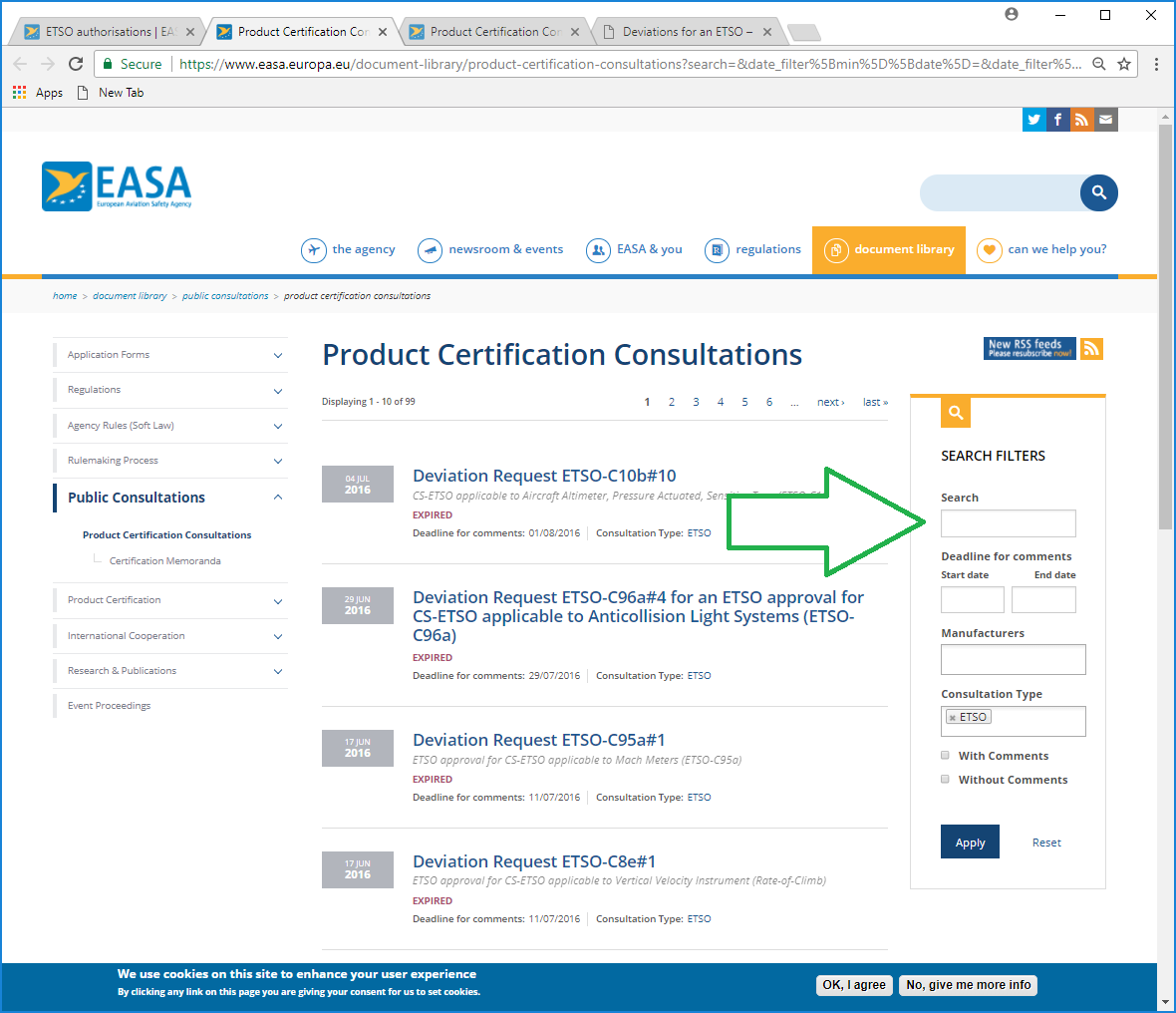What is a DDP and what information should it contain?
DDP stands for Declaration of Design and Performance; it is the central summary document containing the definition and all relevant references of the article. Its informational content could be compared to the one of a Type Certificate Data Sheet for products. In the DDP the applicant is required to state that the article is designed, tested and manufactured in compliance with the applicable sections of Part 21 and CS-ETSO. A template is provided in AMC 21A.608 (Annex I to ED Decision 2012/020/R of 30 October 2012). Form 35 is no longer used.
How does EASA process requests for deviations?
If the article design deviates from the requirements of the applicable ETSO standard the applicant needs to request an approval of a deviation in accordance with Commission Regulation (EU) No 748/2012. On the ETSO authorizations page we have listed all previously approved and rejected deviations sorted by ETSO standard. If the deviation in question has already been approved by EASA earlier please indicate so in the corresponding section of Form 34. If your request is regarding a new deviation you need to provide a deviation request to EASA. To get the deviation request accepted the applicant needs to provide a substantiation showing an “equivalent level of safety”.
The responsible project certification manager (PCM) will check this document. Before the final decision is taken the following steps must be completed:
- The PCM includes all relevant information in a consultation paper.
- The consultation paper is sent to the applicant for verification.
- The consultation paper is sent out for internal consultation in accordance with the Management Board decision N° 07-2004.
- Taking into account the comments received from this internal consultation, the PCM modifies the consultation paper for public consultation on the EASA website. The commenting period is 3 weeks.
- Received comments are collected in a Comment Response Document (CRD) which will be published with the list of approved or rejected comments.
- The deviation is either accepted or rejected and will be included in the corresponding list. In case of an accepted deviation the ETSO certificate is issued once compliance with all applicable requirements is demonstrated.
How to get the list of deviations that one can use for a specific ETSO?
Deviations of other applicants can be reused in an application for ESTO Authorisation, provided an equivalent level of safety can also be provided with your design. To find all the deviations that can be reused, one has to look at two different locations, depending on the date of approval of the deviation. For deviations first used in an Authorisation before January 1, 2013 consult the list of approved deviations.
For all other deviations a search function is provided.
To limit the displayed deviation to a specific ETSO enter the ETSO number in the field named search and click on Apply.

To limit the display to deviations for which the consultation ended during a specific period, select the start date and the end date in the calendars that pop up, when you click in the fields named Start date and/or End date. It is important to select every time the day of the month in a popped up calendar before you click on Apply, because otherwise the date will not be updated for the following search.

Which technical documents are mandatory to receive an ETSO authorization?
There is not a generic list; the documents to be submitted are those necessary to show compliance with the specific ETSO standard.
What other documents are required/advisable?
The following documents should be provided to complete the ETSO data package:
- the already mentioned DDP in which compliance is stated
- a description of the article,
- a compliance check list (i.e. a list of the methods/means which are used to show compliance to each single requirement (test, analysis etc.)),
- a project time schedule,
- a matrix/report for the requirements not covered by testing or analysis based on test.
- applicable test- and qualification plans/reports